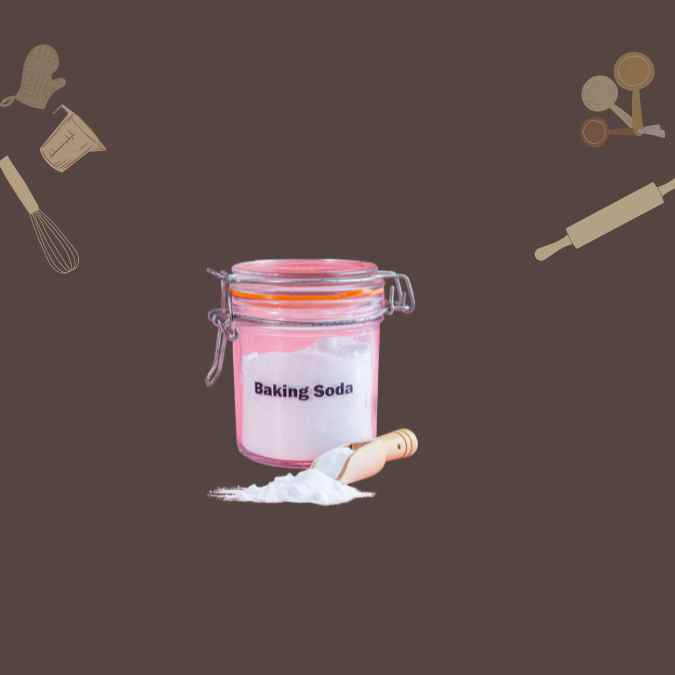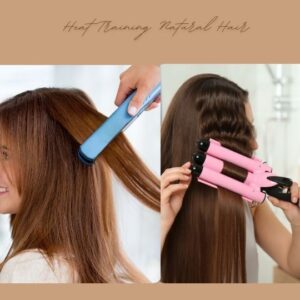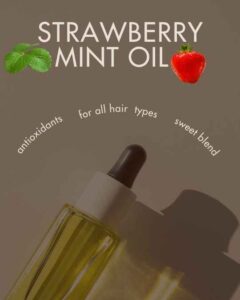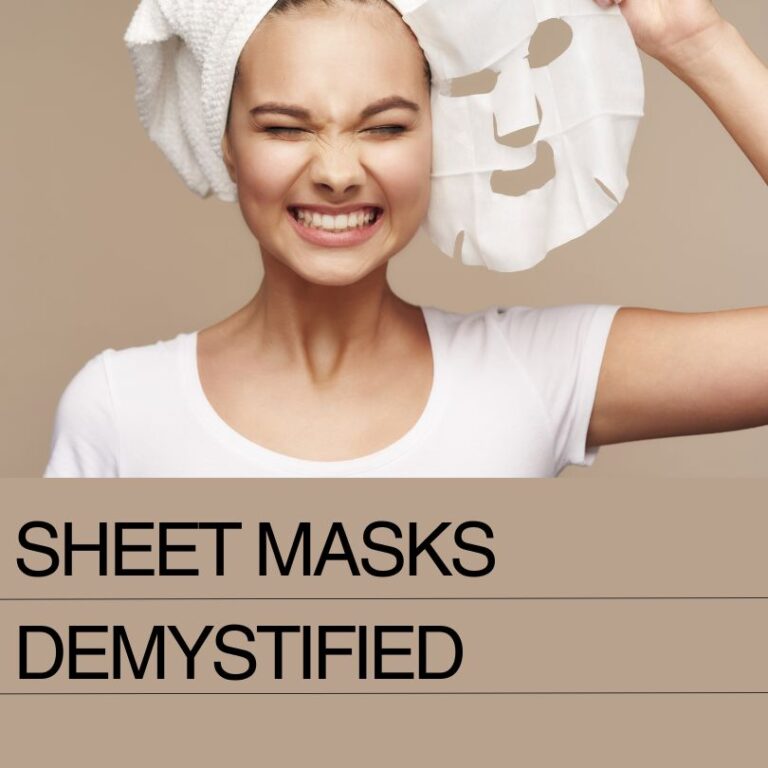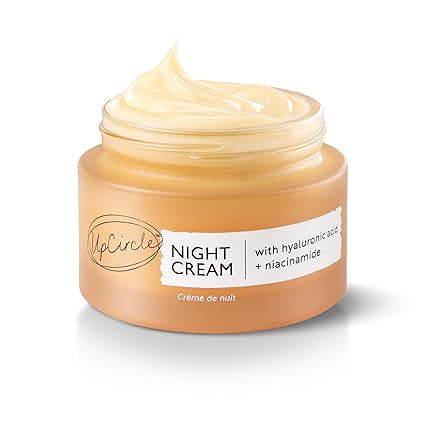There are countless uses of baking soda, which is also known as sodium bicarbonate with hair care being one of them. Sodium bicarbonate, although a gentle cleanser used in the hair with the primary function of removing product buildups, has no direct impact on hair growth.
Hair growth can be categorized as a multifactorial process that depends upon, family genes, general health, diet, and hormonal status. That is why for those who plan to stimulate hair growth, it is better to shift attention to the ways of prophylaxis and proper nutrition.
However, the application of baking soda to the hair is a very questionable practice with many benefits and potentially detrimental effects.
Here are some potential benefits of using baking soda for hair: Here are the following possible advantages of baking soda to the hair:
Table of Contents
ToggleClarifying properties:
Sulfate which is in baking soda is famous for cleaning product residues and excessive oil in the hair and the scalp. It can work as a solubilizer, as it can remove residues from styling products, and other impurities that include hard minerals and pollutants which make the hair lose its natural sheen.
Scalp exfoliation:
On the topic of using baking soda, it can be used to effectively exfoliate the scalp and clean the skin thereby allowing a good environment for hair to grow from. It can help in instances such as dandruff and itchy scalp when occasionally used.
PH balance restoration:
The pH scale of the skin is generally from 4 to 6, and the scalp also falls in its level of acidity. 5 to 5. 5. Some individuals claim that one can get close-shaven whiskers by taking baking sodas that he/she claims work by balancing the pH level of the scalp either in the case of extreme acidity or alkaline. However, the pH of the baking soda alone is alkaline with an approximate value of 9, which can be inadvisable for some people’s scalps.
Despite these potential benefits, there are certain drawbacks and precautions to consider:
Stripping natural oils:
The combination of the two agents may be quite damaging to the hair and the scalp when used frequently or when used in large doses. It has great degreasing ability and may remove the hair’s natural moisture, and cause dryness and damage if used frequently.
PH imbalance:
Though it’s often provides the effect of restoring the scalp’s pH level, if not diluted or used in excessive amounts, it interferes with the scalp’s pH balance. This disruption results in scalp irritation, dryness, and oily scalp due to excess secretion from the scalps in a bid to restore the natural state.
Cuticle saver:
The outer layer of your hair is the cuticle. This cuticle serves as a safeguard for your hair. If you use it baking soda use can damage this cuticle, making your hair more powerless to environmental stressors.
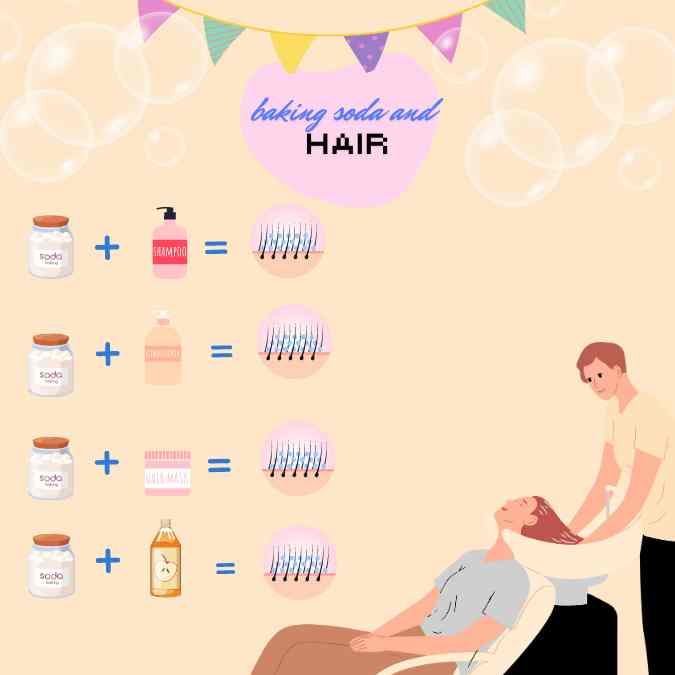
Hair damage and breakage:
Baking soda gives the hair shaft a rough surface which, gradually results in complications such as brittleness, breakage, and lack of elasticity. This is especially the case especially for people who already have dry or damaged hair.
However, if you have not changed your mind and you want to use baking soda for your hair here is how to do it properly. Here are some tips:
Dilute it properly:
Before application, baking soda should be either pasted with water or dissolved in water depending on its required quantity. Do not apply baking soda in its raw form on your hair or your scalp.
Limit frequency:
Baking soda should not be used as a hair wash regularly but more of a treatment hair regime occasionally. Annual or biannual may be the right frequency for most individuals depending on other commitments that one has.
Moisturize afterward:
Since this is a drying agent, it is recommended to do some deep conditioning afterwards and apply some natural moisturizers to replenish the moisture of your hair.
An easy homemade mask that you can prepare by yourself is the baking soda hair mask.
But the thing is that one has to warn that baking soda can be used only as a hair treatment no more often than once in a while since it dries out the hair by sucking the sebum from the hair follicles. Still want to try out a hair mask with baking soda? Good; here is a simple recipe: fill a small bowl with water and add the baking soda in there, mixing until you get some paste kind of consistency. You also can add conditioner or honey if you use this option, add it to the mixture.
Ingredients:
- 2 tablespoon of baking soda
- 4 tablespoons of water
- Optional: 1 tablespoon of conditioner or honey (to add moisture)
Instructions:
- Mix all the ingredients in a bowl to make a paste. If you choose to add conditioner or honey, you can mix them in as well.
- Soak your hair. Apply the baking soda blend to your hair, roots, and scalp.
- Gently massage your scalp for a few minutes to exfoliate. Leave the mask on your hair for about 5 to 10 minutes. Avoid leaving it on for too long, as lengthy exposure to baking soda can lead to dryness.
- Rinse your hair simply with water to confirm all the baking soda is removed. Follow up with a moisturizing conditioner to reload any lost moisture.
Can I mix baking soda with shampoo?
Yes, to answer your question, you can mix equal amounts of it and shampoo to make the clarifying mixture. This can assist in washing out any accumulation of products and excess oil in the hair and the scalp respectively. Wet your hair then pour your normal shampoo from the gods in the palm of a hand or a small cup.
One can then pour a teaspoon or two of the baking soda into the shampoo. The precise quantity depends on the density and length of hair; however, a dispensed line should be used initially and then increased if necessary. So powder the shampoo along with baking soda to get a paste-like substance. Wet your hair thoroughly.
Massage the mixture into your hair, particularly at the region of the roots and scalp. It is best to massage this with your fingertips. Let the mixture remain on your hair for a few minutes to allow it to do its work. Make sure all the mixture is washed off your hair with warm water to enhance proper hair hygiene.
Can I use baking soda or powder as dry shampoo?
Can I just use baking soda or baking powder as a dry shampoo?
Thus, baking powder or baking soda is yet another option that can be used instead of a wet shampoo; however, its usage should be limited and the quantity used should be minimal.
Start with a small amount: Measure it to just one teaspoon or even less in case growing your hair long or have oily hair. More can always be added if required As such, the contingent, ad hoc, and other short-term approaches are preferred. Massage and distribute: Using the fingertip, lightly massage the scalp then if you want to spread the powder through the hair, in the same manner, use the brush. This will assist in soaking excess oil on your hair and giving your hair a new look.
Wait and blend: Let the baking soda or baking powder stay on your hair for a few minutes to help it soak up the oil. Subsequently wipe or brush off the excess powder, using a brush or your hand if you use clean fingers to apply the powder. This will ensure that you do not notice any white residue in your hair after applying the hair regimen.
For a longer-lasting dry shampoo effect, it is recommended that one purchases a commercial dry shampoo that is made to be long-term. These products are intended to be used to soak up the oil and still not cause the hair and scalp to become too dry.
Unlock the Secrets of Hair Detox: Your Ultimate Guide to Cleansing and Rejuvenating Your Scalp and Strands
Does baking soda whiten hair?
Yes, its truly can lighten or wash out or participate in the removal process of some hair dyes or even hair deposition. The properties of baking soda also have an alkaline quality which serves of course as a clarifying agent to the hair and to remove product deposits from the hair. This may make the hair turn slightly lighter especially if the hair has been subjected to pollution or has built up with product residues.
If you are considering using baking soda to lighten your hair, it’s crucial to proceed with caution and consider the potential drawbacks:
- Drying effect.
- Uneven results.
- Potential color alteration.
If you decide to try using baking soda to lighten your hair, here’s a basic method:
- Mix baking soda with water to make a paste. Start with a tablespoon of baking soda and add water gradually until you achieve a thick, spreadable consistency.
- Spread the paste to wet hair, focusing on the areas you like to lighten. Avoid applying it to your scalp or healthy hair strands.
- Leave the paste on your hair for 10-20 minutes, but no longer. Monitor the lightening process and rinse it out promptly if you achieve your desired lightening effect.
- Rinse your hair thoroughly.
Do I use baking soda for colored hair?
Applying baking soda on hair with colored hair is however discouraged. it is alkaline and can damage hair due to its high pH, which targets the hair’s outermost layer, known as the cuticle, and might cause hair color to run.
Color fading: It will have an effect of bleaching as it is an alkaline substance and it can reduce the time it will take for the hair color to fade or change. This can result in a lack of even or ‘optimum’ results or even the wrong results being produced.
Damage to the hair cuticle: Baking soda can interfere with the hair cuticle and this part of the hair is responsible for protecting the hair shaft. This is because the hair will become more porous and hence the color installed can easily fade off and also the hair will become drier.
Inconsistent results: The impact of baking soda on colored hair is out of a toss-up. At other durations, color does not lighten or remove color evenly which leads to the formation of patches or uneven dispersion of color.
In case you have colored hair and you wish to keep the color be it blonde then it is advisable to avoid using it for treatment.

